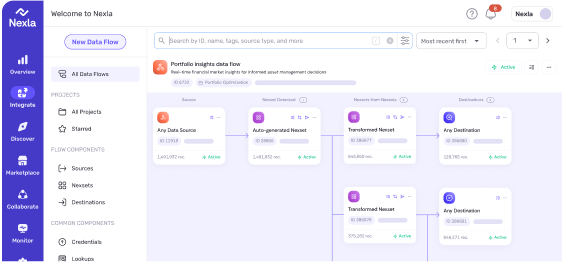
Beyond Compliance: Why Privacy is the Foundation of Trustworthy AI
While it is true that AI offers enormous opportunities for innovation and success, its reliance on personal data raises urgent concerns about privacy, ethics, and governance


The automotive industry is the buzzing topic at CES 2017. That’s no surprise given the pace of innovation in vehicle connectivity and autonomy. But beyond the cool concept cars and live demos, CES discussed questions about safety, regulation, social impact, smart cities, and how these new vehicles will change life and jobs as we know it. New vehicle technology and the automotive data that comes along with it has the opportunity to transform how we live, and will save lives while doing it. But is the automotive industry ready for this challenge?
At Nexla, we believe automotive data will fuel these transformations and we were particularly keen to understand how different players in the industry are thinking about their present and future data challenges. We listened and spoke with experts coming from multiple perspectives, including OEMs like Honda, Land Rover, Audi, and Volvo; Tier 1 suppliers like Harman, consultants, universities and even policy experts including the venerable Ralph Nader (who doesn’t believe autonomous vehicles will be possible in the next 30-40 years, given the industry’s myriad manufacturing safety issues).
It is fascinating to imagine the changes that will come about in the coming decade as we get closer to self-driving cars. The impact goes beyond just increases to productivity and reduced stress levels on our Jetsons-like autonomous highways. Imagine a world with hundreds of traffic deaths a year— instead of tens of thousands. The opportunity to make a real difference in millions of lives is real, but it will take many stakeholders working together to make it happen. In some ways we’ve seen this movie before: the explosion of mobile pushed the need for big-data across many industries. The automotive evolution will take us all into a new era of scale and complexity of big data. The Nexla team is most excited about solving the resulting challenges in managing that data, and realizing these life-changing opportunities.

While it is true that AI offers enormous opportunities for innovation and success, its reliance on personal data raises urgent concerns about privacy, ethics, and governance

In this second episode of DatAInnovators & Builders, Ashish Thusoo breaks down how CurieTech AI uses benchmarks-first discipline and AI-driven build loops to achieve 70–80% productivity gains.

In this episode of The SaaS Podcast, host Omer Khan talks with Nexla’s founder, Saket Saurabh, about live‑coded demos, consultative outreach, and bold moves that drove multi‑7‑figure deals.
